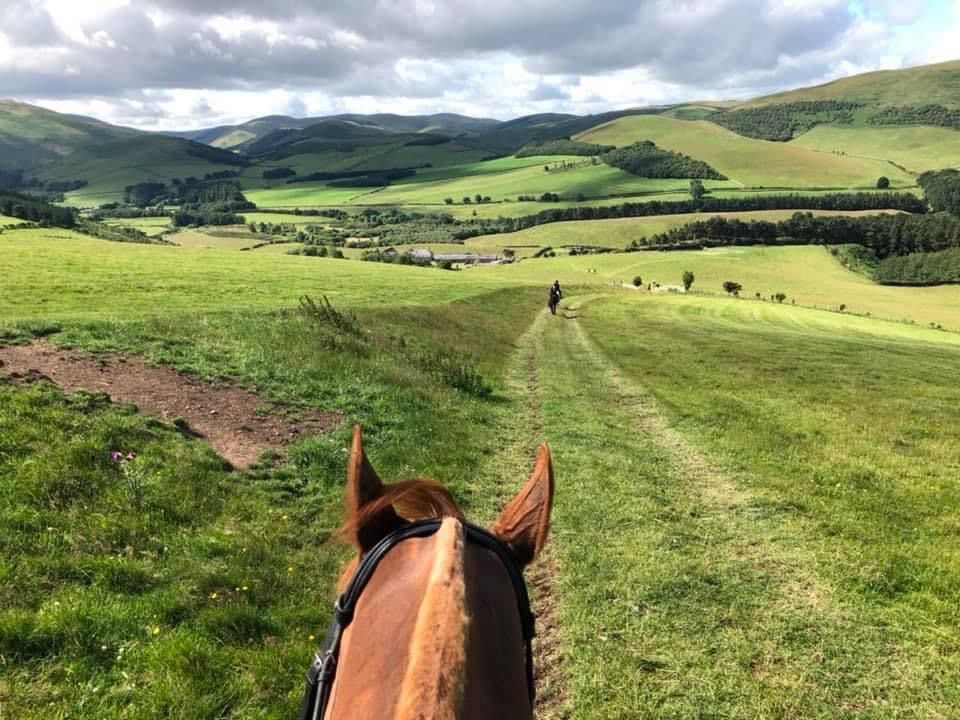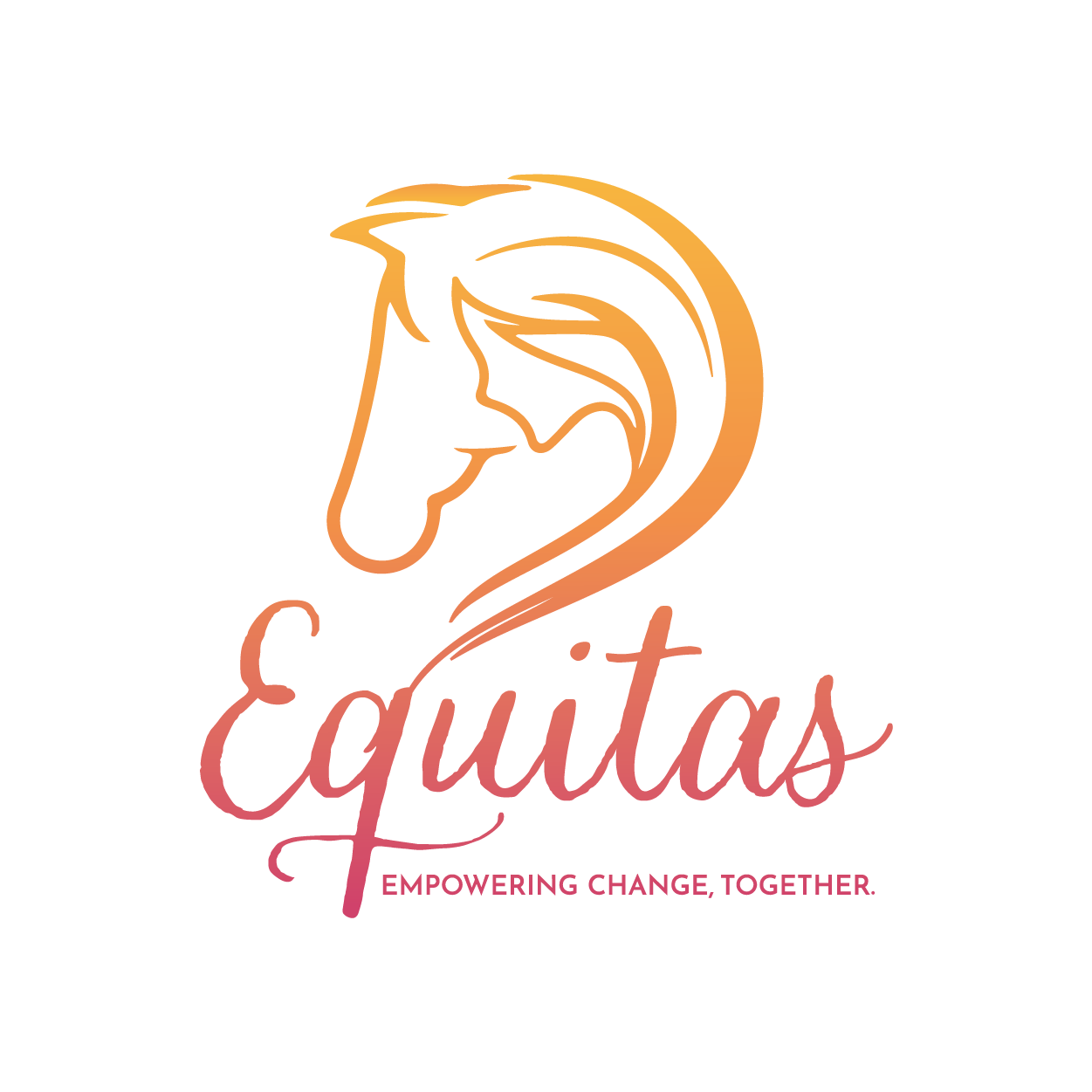Endurance: The New Girl Power

When I was younger, Girl Power came in the shape of the Spice Girls. They came blazing onto the music scene amongst endless boy bands and showed the world women and girls were awesome and could do anything they set their minds to. Fast forward twenty or so years, in a different industry altogether, Equitas is the new girl power showing a new generation of female equestrians that they can have it all. But where better to see the new Equestrian Girl Power in action but with the sport of Endurance!
So what is Endurance?
One thing I do know is that those not involved with the sport don’t often really ‘get it’ but those who have taken the dark path into long distance riding are absolutely 100% hooked! I am one of those who is addicted and so for the next paragraph, I’ll try to convince you that it’s the best thing since the invention of the saddle- I’ll try to keep it brief!
The basics of the sport is a pre-ride check from the vet, followed by your ride (maybe with some vettings in the middle), and the final vetting at the end. The ride bit is the fun bit, where you and your horse follow a planned route, using your route map and various forms of markers, keeping to set speed parameters. The route is usually between 10km and 160km and crosses a variety of different terrain and may require you to tackle different natural obstacles such as water crossings, steep hills, uneven ground and occasionally the more obscure like those 10 foot waving inflatable characters or an angry goose. Am I persuading you yet? No, well take a look at the picture- these are the views you can expect on some of the rides. Totally uninterrupted scenic majesty. Surely the angry goose was worth it!
Endurance is a sport with quite a bit of freedom in a way. You have your set route but how you ride it is mostly up to you. You choose the pace; you choose if you ride alone or with others; you choose what you wear (obviously within reason- chaffing is a very real problem!), there’s more freedom in the tack your horse has and right down the horse you choose to ride… any breed can become an endurance superstar with the right training! It’s always fun to ride with others, but sometimes, you will find yourself riding alone and this really shows you the bond you truly have with your horse and I can guarantee that the bond will only be stronger afterwards. It’s the freedom that I love about the sport and the feeling of having such a strong partnership with my horse, that we can tackle anything in the world!
So after your incredible ride, you return to the venue feeling like you’re on cloud 9 but it’s not over yet. The next bit is probably the most important part of Endurance riding- the vetting. Don’t think of it as a vetting similar to a pre-purchase vetting, as many have that misconception. It’s more making sure you looked after your horse on your ride. If you took care on any rougher ground, rode the hills sensibly, and stuck to the speed you trained for, it’s likely you have little to worry about. Of course there’s always times where things completely out of your control can find you spun out but that’s endurance and it often gives you something to work on or get checked out for next time. Your speed parameters are important in factoring the result of your ride but the second thing is your horse’s heart rate. All heart rates must be below 64bpm to pass, but the lower the heart rate, generally means the higher the points, or grade. A fast speed but high finishing heart rate is likely to get less points, and lower grade, than a steadier speed with a low finishing heart rate. Top tip is to check your parameters, know your horse and find the balance which works best for you. As you progress through the UK endurance grading systems, and up the distances, eventually you may want to try your hand at an endurance race. These are thrilling, where all the things above come into play but this time the winner is determined by the first across the line with a finishing heart rate below 64. There’s tactics, strategies, faster speeds and incredibly fit horses who absolutely know and love their job. Some serious planning goes into competing at this level and to watch the real pros is just amazing. If you ever go to Windsor Horse Show, make sure you try to see some of the endurance- it’s just incredible!
But where does Girl Power come into all of this?
Like the majority of equestrian sports in the UK, women mostly make up the grassroots levels. However, as you move up the levels, in UK endurance, it remains mostly women who dominate the sport. It is very different on an international scale, with many more men competing at top level in other countries but here in the UK it remains women who are at the top of the game. I spoke to Nicki Thorne, the UKs Number 1 endurance athlete, with numerous Team GB appearances as well as many 160km completions, placings, and wins from around the world under her belt, most recently a 4th in Argentina and before that, a win in the 140km 3* at the final FEI ride of the UK season. Her thoughts on why men dominate in other countries may be more practical than you think. She said, “There is a visible difference in the amount of men competing elsewhere in the world (in endurance) compared to the UK and Ireland. A huge amount of men compete in Argentina (and all of South America) and also many women because the sport is so big there. The same in South Africa, USA and also UAE, but also the Mediterranean countries. The main reasons I have come to, based on lots of conversations are; in many of these places the men are not hugely tall or heavy - they are very athletic and lightweight. When the FEI first tried to make the sport equal for men and women, they came up with the weight allowances. If you already weigh well over your weight limit without a saddle, then this may prove an impediment both to competitive ability, due to the extra weight, but also to athletic ability to actually to ride these types of races. As well as affecting the size, type, and breed of horse you need to ride and it’s athletic ability, including metabolically, as well as speed and soundness. Whilst this isn’t true everywhere, for example in the USA and in South Africa, there are many heavyweight classes and riders, it is noticeable in the other countries mentioned.”
She goes on to explain the second biggest reason why more men compete in endurance, especially in South America, “The other is a simple observation and summed up easily in a recent conversion with Carlos Larrere of La Matera in Argentina - “the horse is our culture”. In all of these other countries you still see so many horses everywhere. It is often cheaper to keep horses, more land is available due to the size of the countries, and their continuing rural nature. Maybe it is also a factor that, culturally, the U.K. moved away from horses as a much needed daily part of living a longer time ago. Our reliance on the horse for transport, for agriculture, and all types of work died out quickly and longer ago. Sadly, a nation once known for its massive love of horses very quickly lost their empathy and understanding of the horse, leaving this to only the dedicated few. Of those, the opportunities to compete in a more urban environment may have pushed those riders into more arena bound disciplines. That, coupled with an extremely strong and thriving flat racing scene in the UK and Ireland, which is heralded internationally. Of course with that industry so strong and involving well-paid jobs on large training yards with prize money and affluent owners - the type of rider who just wants to ride out and enjoys cantering and galloping will funnel into the flat racing discipline more so than endurance. Whilst someone living and working in a more built up area will fall more easily in the much publicised Olympic sports such as Showjumping , Eventing or Dressage. In the U.K. - Endurance is still not widely known compared to the countries mentioned.
In 2019, the last time a GBR team competed on the international stage, the British Team for the European Championships all consisted of amazing women; Nicki Thorne, Rachael and Kate Atkinson, Annette Masterson, and Sarah Rogerson. And previously, at the World Equestrian Games (WEG) in Normandy 2014 (the 2018 Endurance WEG was abandoned) the entire British team was again made up of female athletes; Annie Joppe, Beth Langley, Annette Masterson, Catriona Moon and Anna Bridges (then Williams). In fact, since 2014, the only male GBR team member has been Harry Ingram in 2017 with Warrens Hill Chayze, although Carmine Villani has represented GBR at the European Championships with Nicki Thorne in 2021 as an individual. However, this trend may break at the World Endurance Championships in February with James Dickinson and Carmine Villani set to join Fiona Griffiths, Linda Cowperthwaite, Rebecca Pinder and Nicki Thorne to represent team GBR in Abu Dhabi in February.
So why is the sport so popular with women here in the UK Endurance Scene? Could it be the total sense of freedom the sport offers?
Women’s lives are so incredibly busy, and we can often find ourselves in times of both mental and physical stress. Endurance is pure escapism where for a few hours the only worry you have is getting your horse from start to finish and often over stunning landscapes. You just never forget that feeling of cantering, perhaps buckle end, with complete trust in your horse through some amazing countryside. Caitlin Birkett; Home International England Team member, Northern Young Rider Representative and Endurance Para-Rider began Endurance through Pony Club. She explains, “I find that within a society where women are judged for every single thing, whilst out on course we can feel free from that judgement and can spend hours just relaxing with our own thoughts. This level of mindfulness really helps to reduce the pressures of the world. When doing show jumping, it’s a much shorter time in the saddle and a more pressurised situation because there is more pressure to wear the right thing and ride in the correct way. Spectators only see Vet Gates or crewing sites in endurance. Endurance gives me an enormous sense of freedom. It gives me the feeling of power and achievement. As a para rider it gives me physical and mental freedom. I can’t walk far or up hills well so this limits my ability to go places. On my horse, I’m free. There are no limits to where we can go. I haven’t found a way to replicate that anywhere. The cognitive side of my disability means jumping multiple courses in a day can make me worse and I really struggle. I use proprioception to guide me round courses and tests – endurance has given me this skill. I don’t think I’d have gained it in another discipline.”
Is it that Endurance is a sport the whole family can get involved with?
In the lower level distances, having a backup crew is optional, although very handy to have. Crews tend to be roped in family members- often husbands and children bribed with the promise of chocolate and dinner at the pub. There are also some families in the sport who ride together… I do hope that will be us someday when my daughter is a little older! They become their own team with mothers, daughters, and sisters riding, quite literally, side by side while their back up crews are made up of husbands, partners, fathers, and brothers. They make quite a force to be reckoned with!
Is it perhaps the way the grading system works here in the UK?
Achieving points based on your speed and heart rate makes it very difficult to compare yourself with others. You really are almost competing against yourself, trying to improve on your own personal best. Maybe that’s why Endurance appeals to those who want out of the pressure of other horse sports where competitors are more likely to be pitted against one another and the inevitable green eyed monster arising from that. Caitlin adds, “I’ve never had a nasty comment or a situation where someone does not offer to help or support anyone. There is a sense of community and wanting everyone to succeed in endurance. Plus it’s all about the horse and their care, everyone seems to have the same love of horses in the endurance community.”
And so is it the ‘togetherness’ of the sport?
By that, I mean that the support systems in place at a ride are incredible. All there are genuinely rooting for you to succeed. I remember riding at one event in the 64km class and getting into some real difficulty with some pigs… and there were a lot of pigs on this ride. I had been riding on my own up until this point and my horse was just freaking out, in turn freaking me out and we’d got ourselves stuck in a bit of a rut. I remember quite clearly planning on riding to the next check point and retiring from the ride. Then, Team GB rider and UKCC coach Rachael Atkinson, appeared behind and rode with me for the rest of the ride, persuading me to continue, helping at any sticky points and generally just being amazing. She didn’t need to do that, she could have just as easily ridden on and completed her own ride but she didn’t and it’s something I won’t ever forget. It gave me so much more courage at each ride that season and we went on to complete our own FEI ride later that year. The second picture is of Caitlin Birkett and I, riding at the Northern Championships in 2017. She was doing her first 40km qualifier with her horse Mistletoe and I was doing my first 80km qualifier with Fraggle. They were going incredibly well together, which was unlike Fraggle as she normally preferred riding alone, so we rode my first loop together. It was only half way round that we discovered they were by the same stallion, Rabanat! Maybe they knew? It certainly helped having each other to get round our firsts and since then, I know we’ve got each other’s backs!
I don’t say it lightly when I say Endurance is a big family all supporting each other, whether crews, riders, volunteers or organising committees, we’re always there for each other, waiting at the finishing line cheering each other on. Perhaps that’s what it is about Endurance here in the UK and Ireland, women are looking for a community and a safe space where they can be free to compete with their horse at a pace and level that they chose without judgement or criticism. Where they can experience freedom that they otherwise wouldn’t have alongside others that just want the same.
So if you’re looking for a supportive, family-orientated, breath-taking sport, where judgements are left at the door, where you get to ride side by side with your heroes, where you and your horses are challenged in a way you never thought possible and Girl Power reigns… maybe take a look at Endurance.




